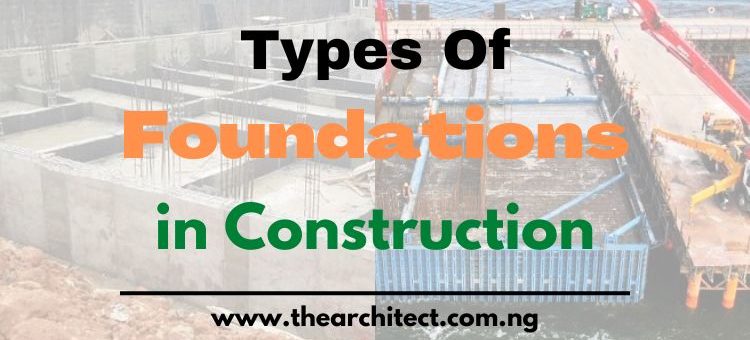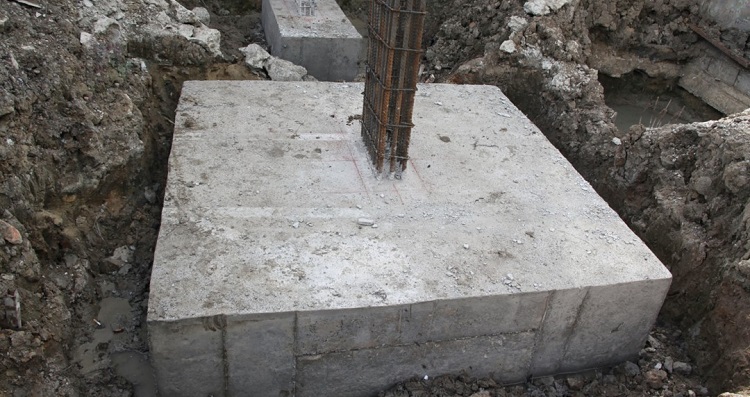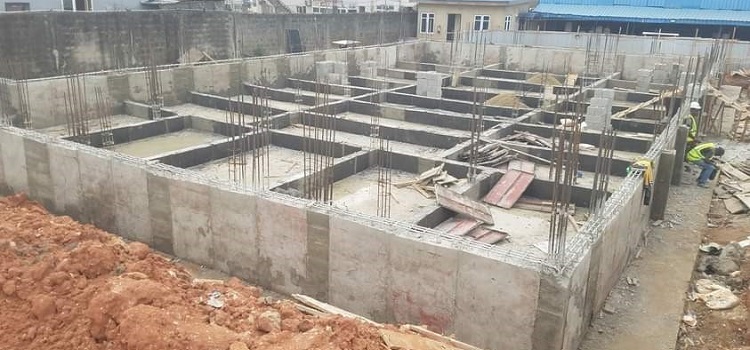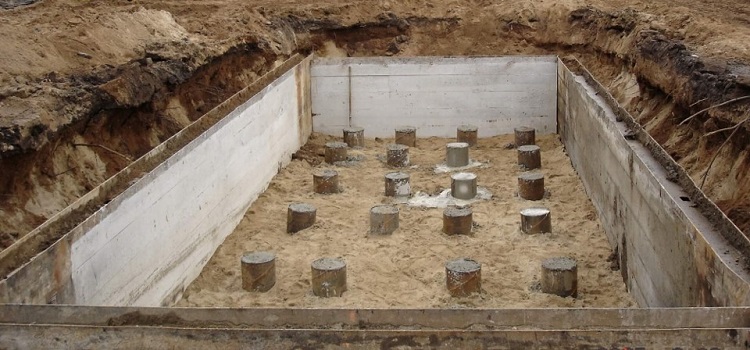
Types of Foundations in Building Construction
- Posted by Ikenna N.
- On July 11, 2025
- 0 Comments
Do you know there are several types of foundations in building construction? Read further down this article put together by TheArchitect.
One of the most crucial components of construction is its foundation. A foundation is referred to as the portion of the structure that distributes the weight of the structure over a sizable area of soil. This is done in a way that does not exceed the soil’s ultimate bearing capacity and keeps the overall settlement of the structure within a bearable range. The component of construction known as the foundation is what the building rests on. The foundation bed is the firm surface that it rests on.
As a non-building professional, it is important to understand these concepts. It helps you have insights into the construction process so you don’t seem lost when the conversation comes up. The foundation stage is the most critical stage in construction, thus needing the most attention.
Table of Contents
Why do We Need Foundations in Buildings?
The foundation’s main goal is to evenly distribute the incoming weight to the ground, which will increase the structure’s overall stability. In other words, the more stable the foundation, the more stable the structure will be. Let us break this down using a wider perspective.
Even Load Distribution
The foundation of any structure is subjected to dead and live loads. Dead loads refer to the constant weight of the superstructure itself. This does not change, while the live loads refer to the weights of things going in and out of the superstructure. As a result, all of these loads are distributed uniformly and securely to the earth beneath the structure by the foundation.
Load Intensity Reduction
Another objective of the foundation is to distribute the loads from the superstructure across a wider area below, substantially reducing the magnitude of the incoming load at the base. As a result, the foundation makes sure that the overall imposed load does not exceed the subsoil’s safe bearing capacity.
Protection Against Varied Natural Force
A foundation serves as an anchor against various forms of natural forces that may be applied to the structure. This results in the prevention of a total collapse of the structure above it.
Other functions of a foundation include the following:
- Protection against moisture ingress.
- Provision of lateral stability to the structure.
- Protection against soil movements.
- It serves as a means of passive thermal control for the structure.
- Provision of a level surface for the superstructure to be built on.
Types of Foundations in Building Construction
Generally speaking, there are two types of foundations: shallow foundations and deep foundations. Shallow and deep foundations describe the soil depth at which these foundations are positioned. Typically, a foundation is referred to as a “Shallow Foundation” if its width is bigger than its depth.
A “Deep Foundation” is one in which the foundation’s width is less than its depth. The following chart illustrates how deep foundations and shallow foundations can be divided.
Types of Shallow Foundation
As previously explained, shallow foundations spread across the surface more than it extends beneath the soil. Examples of this foundation include the following listed below:
Isolated Spread Footing / Pad Footing Foundation

The isolated spread footing or “pad foundation” as it is popularly called is the most well-known and affordable foundation type. It is easy to construct and is generally used in shallow structures. The pad foundation distributes and supports individual columns. They are typically employed for regular construction and can support up to five (5) floors.
Raft Foundation

A raft foundation sometimes referred to as a mat foundation, is simply a continuous seamless slab resting on the ground that covers the whole building’s outer perimeter, supporting it and transmitting its weight onto the soil.
Wall / Strip Foundation
A Strip foundation is usually employed for load-bearing walls. A strip foundation is also used for a row of columns that are closely spaced from one another. This type transfers loads from structural or non-structural load-bearing walls to the ground without exceeding the soil’s capacity to support the loads. It follows the wall’s direction as it moves.
Combined (Pad and Strip) Foundation
A combined foundation is one of the types of foundation in building construction. However, it is not “really” a type of foundation since it simply refers to the combination of two different foundation types (Pad and strip), within a structure. A combined footing supports two columns. When two columns are so close to one another that their individual footings would overlap, this technique is used.
Strap or Cantilever Footing
Two footings are joined with a structural strap or a lever to form a strap (or cantilever) footing. The strap joins the two footings, causing them to function as a single unit. The strap is made to be rigid like a beam. The separate footings are created in a way that their combined line of action crosses the overall load result. When the permitted soil pressure is high and the distance between the columns is large, a strap footing is more cost-effective than a combined footing.
Types of Deep Foundation
Deep foundations are those that are wider in width than they are deep. When the subsoil strata cannot safely support the loads caused by the construction, deep foundations are suggested. In this situation, the foundations’ founding level is lowered to a deeper location with the necessary bearing capability. The following Deep foundation types are frequently used.
Pile Foundation

Pile foundations are a type of deep foundation that is used to transfer heavy loads to deeper layers of soil. They are commonly used in construction projects that require support for tall structures or heavy machinery. Pile foundations consist of long, slender columns that are driven deep into the ground until they reach a layer of soil that is strong enough to support the load.
There are several types of pile foundations, including driven piles, cast-in-place piles, and helical piles. Driven piles are typically made of steel or concrete and are driven into the ground using a pile driver. Cast-in-place piles are formed by drilling a hole in the ground and then filling it with concrete. Helical piles are similar to driven piles, but they have helical blades that help to anchor them in the soil.
Caissons Foundations
A caisson foundation is a water-retaining building that provides a workspace for pier foundation operations. Caisson foundations are a type of deep foundation used in construction. They are cylindrical structures that are drilled into the ground and filled with concrete or other materials. Caissons are commonly used in areas with soft soil or where the load from the building is too heavy for shallow foundations.
Drilled Shaft Foundation
A drilled shaft foundation is a type of deep foundation used in construction. It involves drilling a hole into the ground and filling it with concrete. This type of foundation is commonly used in areas with weak soil or where a large amount of weight needs to be supported.
Summary
In conclusion, choosing the right foundation is crucial for any structure. By considering the soil type, weight of the structure, and location, one can determine whether a shallow, deep, or mat foundation is necessary. It is important to consult with a structural engineer to ensure the foundation is properly designed and constructed.





0 Comments